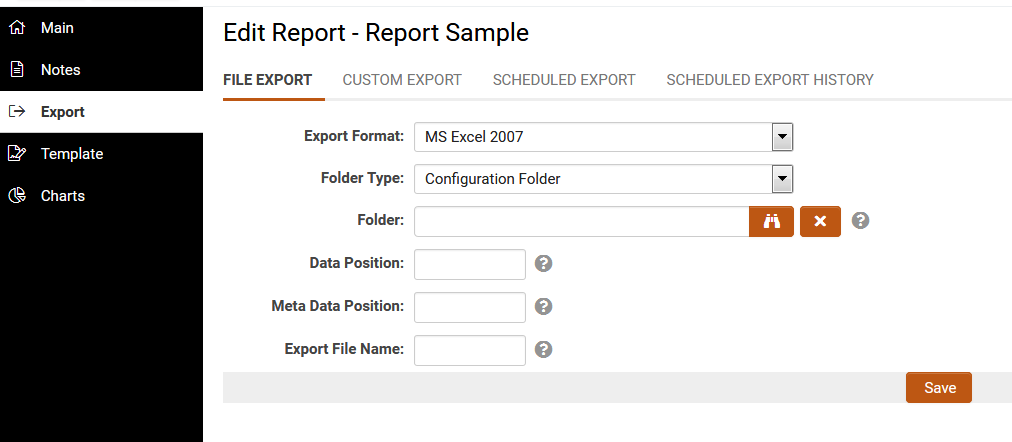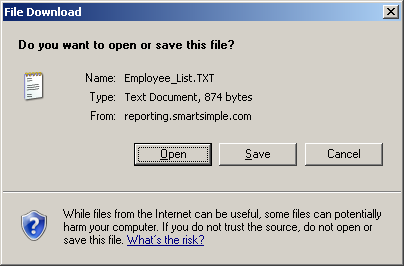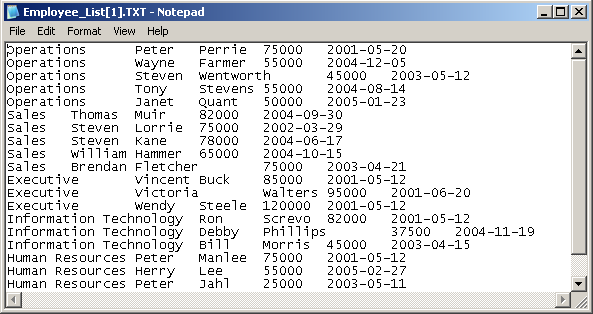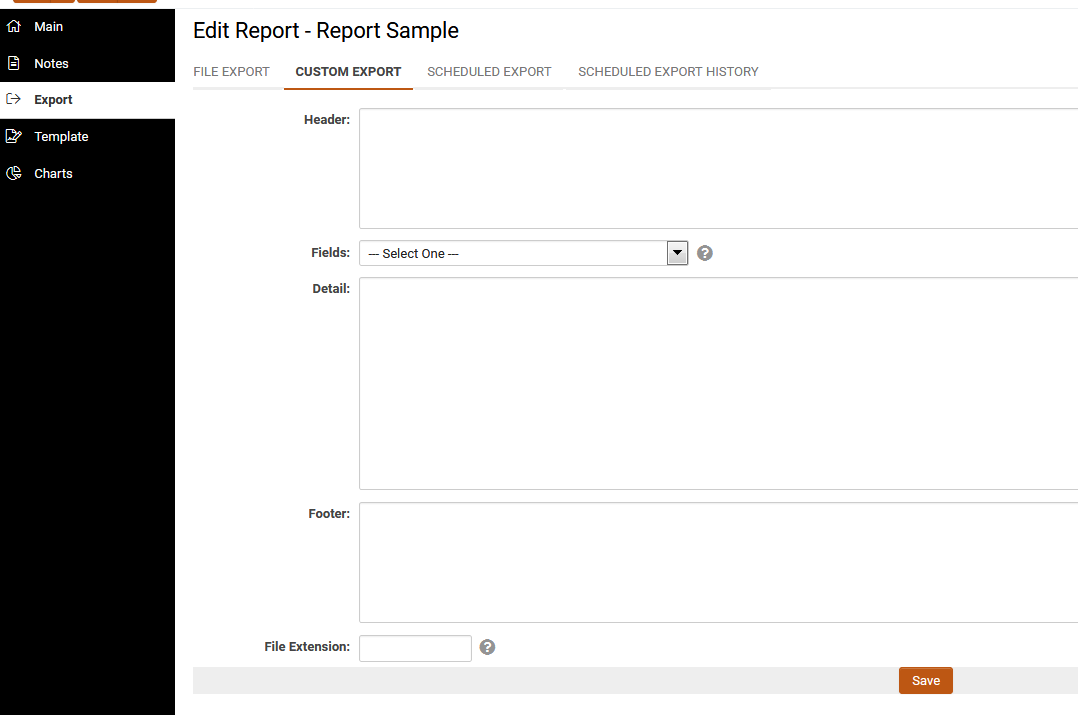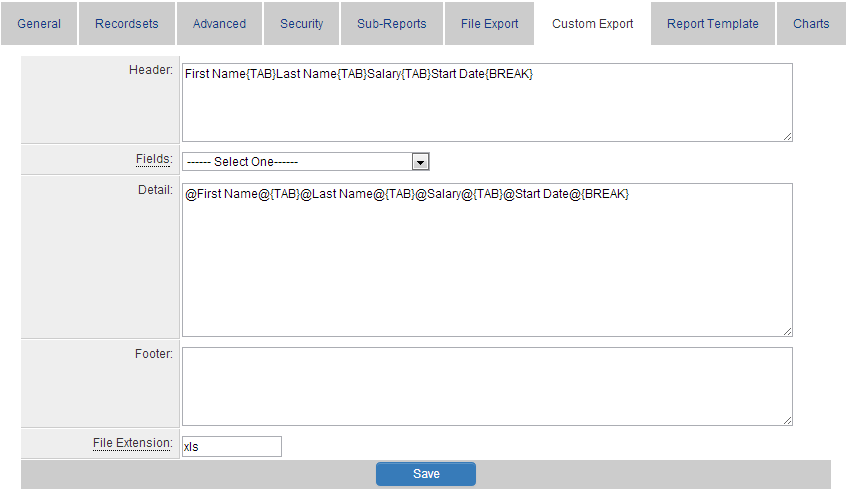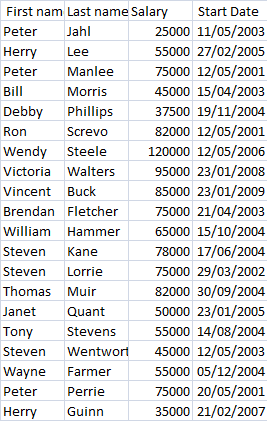Exporting Reports
Contents
Overview
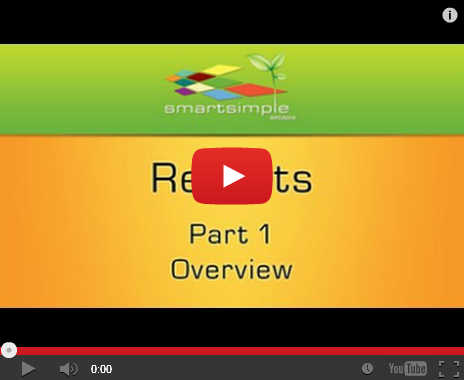
There are two techniques to access report data from other applications.
- If you want to access reports from Microsoft Excel or Microsoft Word, then you can use the SmartSimple Plug-Ins for Microsoft Office for these applications to access report data.
- See Plug-Ins for Microsoft Office for details
This article explains how to use the 2nd method, which is exporting.
- If you want to export the report data to any other data format (for example comma separated values), then you can use the Export settings for the report to create the file format required.
- You can also use this technique to create a MS-Excel or MS-Word file, without the need to use the Plug-In application.
File Export
File Extension
A report can be exported into a flat file with the following file extension:
- txt – Windows Notepad.
- xls – Microsoft Excel.
- iif – QuickBooks.
- csv - Comma Separated Values.
- xml - Extensible Markup Language (can be opened in Notepad).
1. Set the Extension to txt.
The extension txt is generally associated with Notepad.
2. Click the Save button.
3. Click the Edit Report button.
4. Click the Reports tab.
The report list is displayed and the Employee list report is now displayed with an Export button.
5. Click the Export button.
Depending on your Browser and Security setting, you may need to answer some prompts before the file can be opened.
6. If required, click the Open button.
The file is opened in the associated application – Notepad.
The file name is set to the report name plus the extension specified.
7. Close the Notepad application.
IMPORTANT: In order to support special characters such as French accented letters, euro symbols etc SmartSimple uses UTF-8 encoding. When opening exported files Microsoft Excel always imports using ASCII, so special characters do not appear correctly. This is a flaw with Excel. In order to export data containing special characters to Excel use one of the procedures outlined on the Exporting Reports with Special Characters to Excel article.
Note: If the report has sub reports attached then you must set up the Custom Export settings for each of the sub report attached.
Export to XML
If you change the File extension to xml, then the report will construct an XML document from the report results.
1. In the Header section enter the XML declaration and open the root element, details:
<!--?xml version="1.0" encoding="ISO-8859-1"?-->{BREAK}
<details>{BREAK}
2. In the Detail section add the child elements, in the sample below the child is employee with subchildren firstname, lastname, salary and startdate.
The {TAB}s and {BREAK}s will give the XML document proper indentation:
{TAB}<employee>{BREAK}
{TAB}{TAB}<firstname>@Users - First name@</firstname>{BREAK}
{TAB}{TAB}<lastname>@Users - Last name@</lastname>{BREAK}
{TAB}{TAB}<salary>@Users - Salary@</salary>{BREAK}
{TAB}{TAB}<startdate>@Users - Start Date@</startdate>{BREAK}
{TAB}</employee>{BREAK}
3. In the Footer section, close the root element:
</details>
4. The Export XML document opened in Notepad:
<?xml version="1.0" encoding="ISO-8859-1"?> <details> <employee> <firstname>Peter</firstname> <lastname>Jahl</lastname> <salary>25000</salary> <startdate>11/05/2003</startdate> </employee> <employee> <firstname>Herry</firstname> <lastname>Lee</lastname> <salary>55000</salary> <startdate>27/02/2005</startdate> </employee> <employee> <firstname>Peter</firstname> <lastname>Manlee</lastname> <salary>75000</salary> <startdate>12/05/2001</startdate> </employee> </details>
Exporting with Subreports
In order to export a report that contains subreports or merged reports you must define the Advanced Export Settings for the subreports, as well as the main report. Example:
- The following would export a report and subreport in Comma Separated Values format (CSV):
@Companies/Accounts - Company name@,
@Companies/Accounts - Address 1@,
@Companies/Accounts - City@,
@Companies/Accounts - State@,
@Companies/Accounts - Company ID@,
@subreport_0@
{BREAK}
Custom Export
- Click the Custom Export tab (formerly Advanced Export Settings).
The Custom Export window is displayed.
This window consists of the following settings:
- Header - Static or variables that you need to display at the top of the export file.
- Fields - A list of fields taken from the report that is being used to create the report. In addition, you can select two special settings – {tab} – used to add a tab character to the specification and {break} – used to add a line feed to the specification.
- Detail - You construct the actual record layout for the specification in this area. This section can consist of multiple lines.
- Footer - Static or variables that you need to display at the bottom of the export file.
- File Extension - The extension that you wish to associate with the export specifications. By setting this value to any valid Windows file extension, the appropriate application will be launched when the data is exported.
Other settings:
- Delimiter - tab character ({TAB}), comma, semi-colon, colon
- Line breaks - use either a UNIX line break ({LINEFEED}) or a Windows line break ({BREAK})
- Aggregate Functions in Header or Footer
- COUNT - count the total rows per report. @COUNT(column_name)@
- SUM - sum of a column in the report. @SUM(column_name)@
- Please refer to Exporting Reports with Total Group By when exporting reports when Using Total Group Options in Report Builder
Using Custom Export to export Excel
1. Click the Reports tab.
2. Click the Edit button for the Employee List report.
3. Click the Custom Export tab.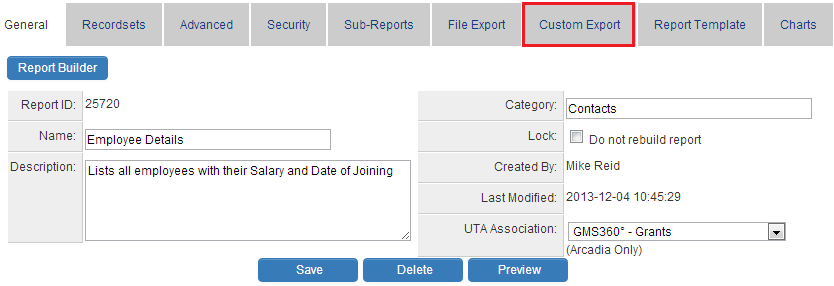
You can specify the layout of the report to be exported in the next screen
Header section : you specify the column headings for your report to be exported.
Fields drop down : gives a list of variables that correspond to the fields selected in the report through report builder.
Details section : you specify the fields for the report to be exported. The fields that you select will be displayed right to left in exported report so select the field for the last column first.
4. Change the Extension to XLS or CSV.
5. Save the Layout.
6. Return to the Report list and click the Export button.
The File is opened in MS-Excel.
Export to SmartFolder or SFTP
A report can now be automated to export as report as per schedule on a daily, weekly, or monthly basis to a SmartFolder or an external SFTP site.
Go to Scheduled Report Export on how to configure scheduled report exports.
History Log
Available after March 2020 upgrade.
A new feature that shows history information tab.

- # - item number
- File - filename of the exported file.
- File Size - file size of the exported file in kb.
- File Export - status of the exported file.
- Success - the file was successfully exported
- SFTP Failed - file was not exported to the sftp
- Save to Folder Failed - file was not exported to the SmartFolder/Configuration Folder
- Saved to Folder; SFTP Failed - file was exported to the SmartFolder/Configuration Folder but was not sent to the sftp
- Save to Folder Failed; SFTP Failed - file was not exported to the sftp and to SmartFolder/Configuration Folder
- Empty Report; No File Created - file was created w/o any records or no file was created
- Saved to Folder Failed; SFTP Sent - file was exported to the sftp but was not sent to the SmartFolder/Configuration Folder
- Start Time - date and time the file was processed for export
- End Time - date and time the file export was completed
- Status - status of the scheduled report export
- Started - when the file is being created
- Completed - the file was exported
- Failed - the file failed to be exported
- Interrupted - the process was terminated i.e. GORT was terminated abruptly (someone restarted the server)
- Run By - name of the user who uploaded the file
- Error - displays error i.e. sftp error:#Error: Permission denied
- Process ID - unique identifier of the process
